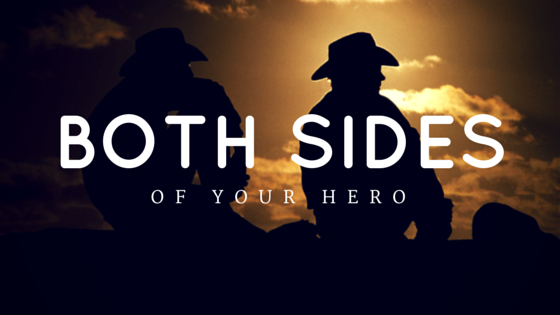You know the rules. Things have got to get worse before they can get better. Let your character have a goal, but don’t give him what he wants. That’s why people keep reading.
You’ve also got to dish up all your character’s flaws on a silver platter. To have a moving story, your flawed character needs to face his darkest moment, and step away from it victorious.
With pen and outline paper in hand, you build your story, weaving twists and turns that will leave your reader begging for mercy. (That’s your plan anyway–it says so in the outline.)
Then you get to the end of your story, that bright, shining moment after you’ve tortured your character and pulled all his strings. He (or she) is a new creation, transformed before your eyes, and you finally bestow upon your lead the crown of victory. Everyone can stand back and say: MISSION ACCOMPLISHED.
Almost.
What?
That’s right. Doesn’t that sound a little hollow to you? You need something great and touchy feely that’ll put the icing on the cake for your character and readers. It’s not enough to send your lead into impenetrable darkness and bring him out safe and sound.
You also have to let your character have his (or her) happiest moment. How do you discover this blissful retreat? Well, you interview your character. Get into his (or her) head, and ask. You might be surprised what you discover. I think it’s also important that what your lead’s happiest moment be different from his (or her) heroic goal (or want) that propels the story.
For example, anyone watch ABC’s Castle? The story goal there is always to catch the killer. And then, as the story developed deeper in seasons 2-4, Richard Castle’s happiest moment began to form. He fell in love with Kate Beckett. His happiest moment, separate from the story goal, would be to spend forever with Kate… (Thankfully, the writers delivered that–but doesn’t that help you see the difference? Doesn’t that pull at your heart strings twice as much as just catching the killer?)
The happiest moment can be simple, small, and it adds dimension to your character. It lets him (or her) be human.
Where should the happiest moment happen in your story? That’s completely up to you. You’ll have a sense of when your story really needs it, whether it’s at the beginning (and your character discovers that truly wasn’t the happiest moment), the middle (and your character realizes this is what he (or she)’s been looking for and the whole story turns around), or at the end (icing for the delicious cake of triumphant victory). Or any mix of locations in between–even the end of a series. You’re the creative genius. I have complete faith in you to figure it out.
It’s time to release your character’s bright side as well as the dark side. Don’t start writing unless you know both sides of your hero.

